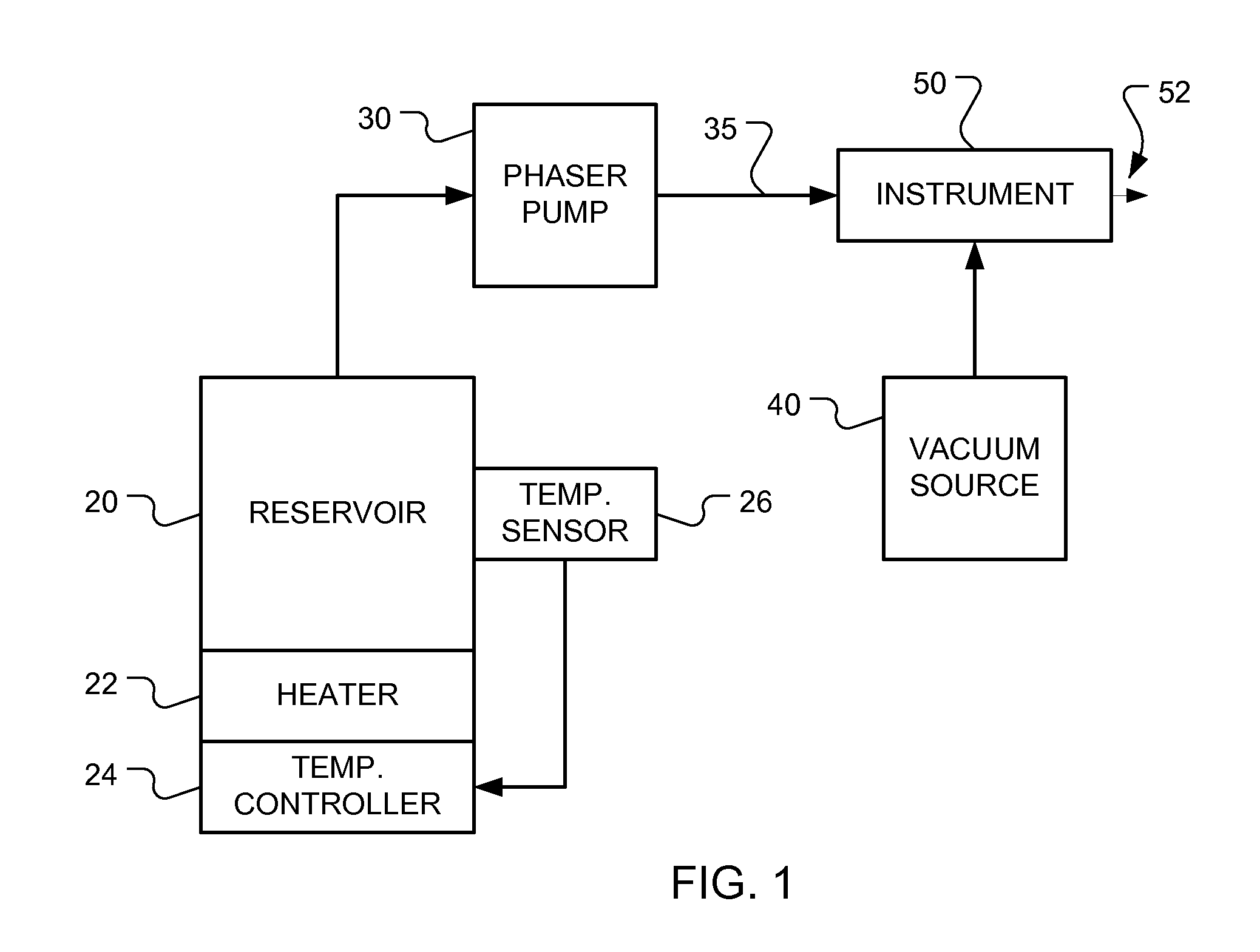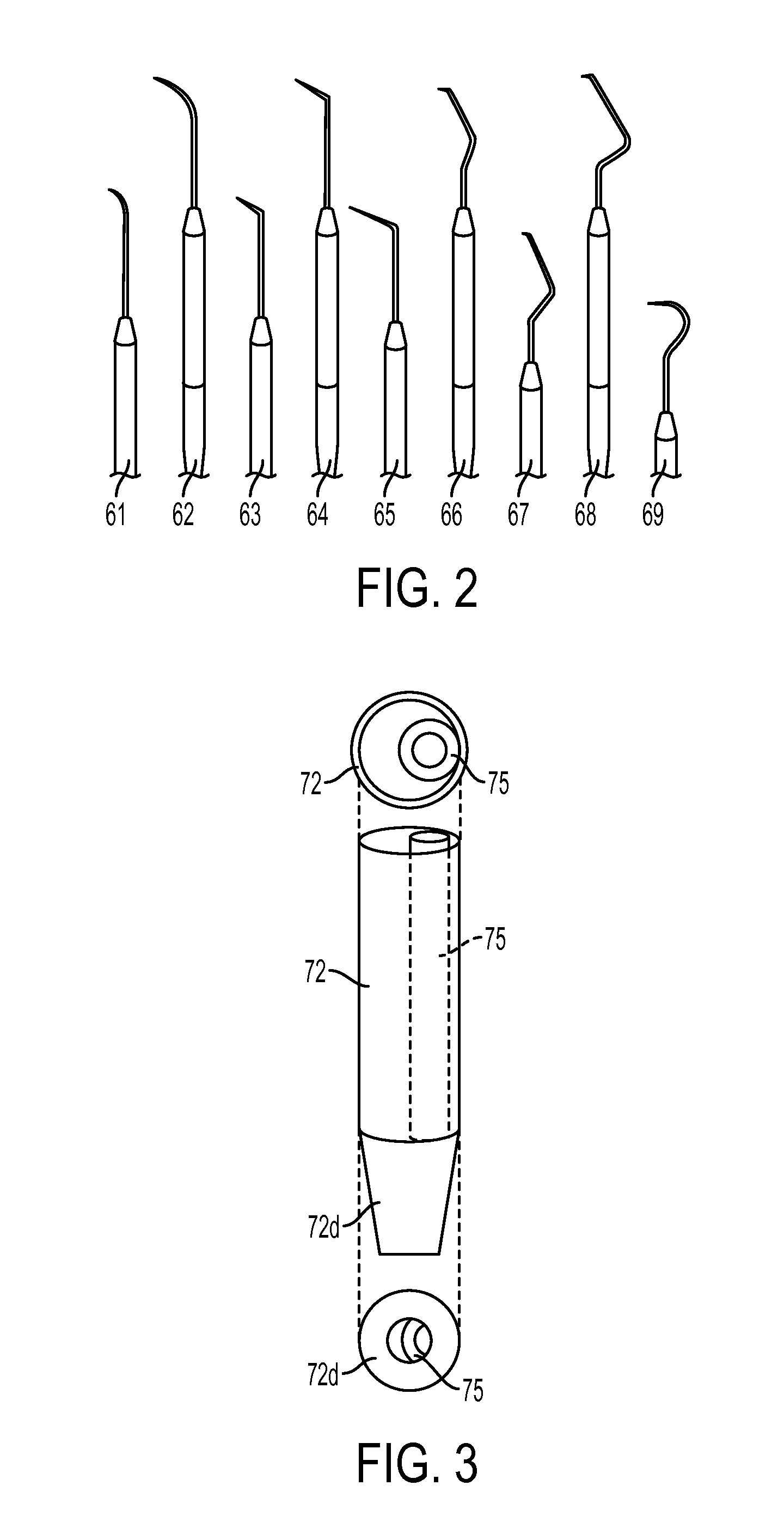Endodontic Applications of Tissue Liquefaction
a tissue liquefaction and endodontic technology, applied in dental surgery, teeth capping, teeth nerve/root treatment implements, etc., can solve the problems of process actually enlarges the root canal, files are sometimes broken, and it is difficult and sometimes impossible to remove the broken file pi
- Summary
- Abstract
- Description
- Claims
- Application Information
AI Technical Summary
Benefits of technology
Problems solved by technology
Method used
Image
Examples
first embodiment
Several different arrangements may be used for the internal construction of the tip on the Phaser System to achieve tissue liquefaction and removal. In a first embodiment, two independent tubes (not shown) are utilized—one tube to provide the Phaser stream (heated, pressurized and pulsed), and another tube to provide the aspiration (vacuum). The distal end of these tubes may be straight, or may be shaped into any of the shaped depicted in FIG. 2 or into other shapes (e.g., straight, curved, or bent).
The distal portion of these tubes are inserted into the tooth in an alternating sequence through the opening in the crown (made, e.g., by the conventional techniques discussed above in the background section). First, the Phaser tube (i.e., the fluid delivery tube) in used to expose the pulp to the Phaser stream and cause it to be liquefied. Then the aspiration tube (i.e., the suction tube) is inserted to remove the liquefied pulp material. This Phaser / aspiration alternating sequence is c...
PUM
 Login to View More
Login to View More Abstract
Description
Claims
Application Information
 Login to View More
Login to View More - R&D
- Intellectual Property
- Life Sciences
- Materials
- Tech Scout
- Unparalleled Data Quality
- Higher Quality Content
- 60% Fewer Hallucinations
Browse by: Latest US Patents, China's latest patents, Technical Efficacy Thesaurus, Application Domain, Technology Topic, Popular Technical Reports.
© 2025 PatSnap. All rights reserved.Legal|Privacy policy|Modern Slavery Act Transparency Statement|Sitemap|About US| Contact US: help@patsnap.com



